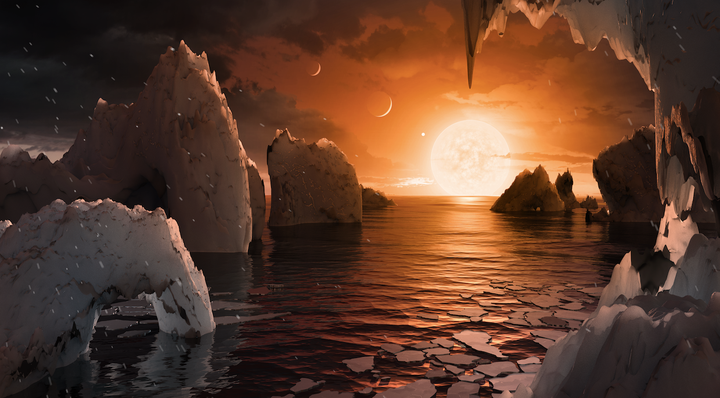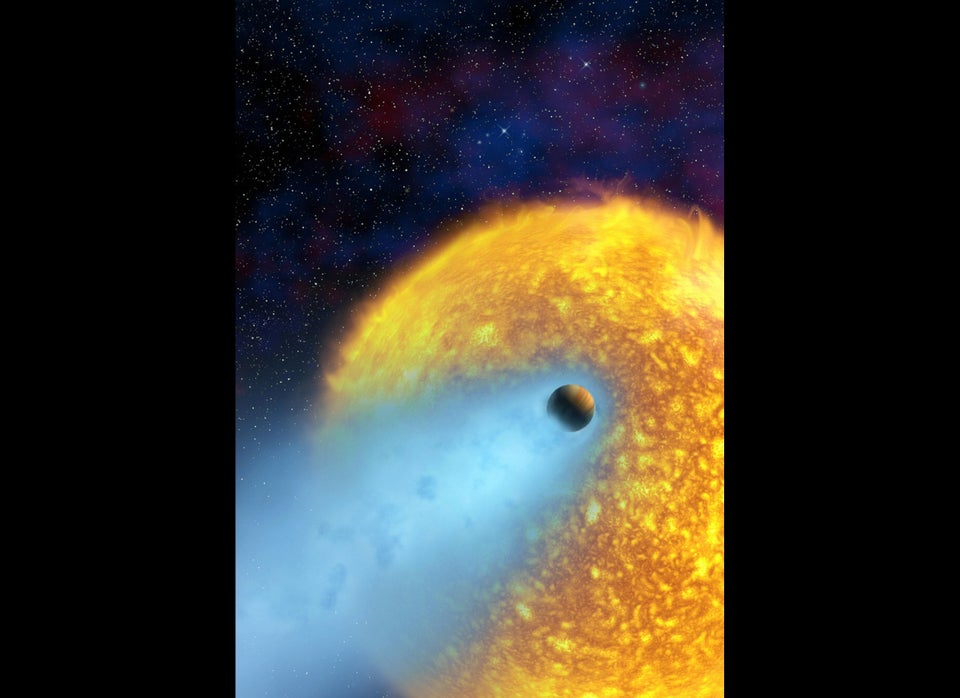WASHINGTON — To the delight of science enthusiasts, NASA has announced the discovery of seven Earth-sized planets orbiting a single star a mere 39 light-years away.
In a highly anticipated press conference Wednesday, the space agency provided details about the alien worlds surrounding TRAPPIST-1, an “ultra-cool dwarf” star in the constellation Aquarius.
Of the seven rocky planets, three lie in what is known as the “Goldilocks Zone” — a habitable region around a star in which a planet is most likely to harbor water, and even life. But under the right atmospheric conditions, scientists say, all seven could potentially have liquid water.
Thomas Zurbuchen, associate administrator of the Science Mission Directorate at NASA headquarters in Washington, said these exoplanets ― planets that orbit a star other than our sun ― provide perhaps the very best opportunity for scientists to answer once and for all whether humans are alone in the universe.
“The discovery gives us a hint that finding a second Earth is not just a matter of if, but when,” Zurbuchen said.

In addition to being the first known system of seven Earth-sized planets around a single star, the discovery sets a record for the most planets found in the habitable zone of a star outside our solar system, according to NASA.
Compared to our sun, TRAPPIST-1 is extremely cool. And its planets orbit much closer to their host star than planets in our solar system. In fact, all of the system’s planets are closer than Mercury is to the sun.
And they are extremely close to one another.
“If you were on the surface of one of these planets, you would have a wonderful view of the other planets,” said Michael Gillon, an astronomer at the University of Liege in Belgium. “You would not see them like you see Venus or Mars as dots of light ... You would see them really as we see the moon.”
At about 39 light-years away, or 230 trillion miles, the system is relatively nearby. By comparison, Proxima Centauri, the nearest star other than our sun, is roughly 4.22 light-years from Earth.
Back in May, astronomers using the Transiting Planets and Planetesimals Small Telescope (TRAPPIST) in Chile discovered what they initially believed to be three planets in the system. Upon further observation, however, NASA’s Spitzer Space Telescope revealed the star is home to seven.
Nikole Lewis, an astronomer at the Space Telescope Science Institute in Baltimore, called the Earth-like cluster of planets “mind-blowing.”
“I would have never predicted this. It’s beyond anything I could have dreamt of,” she said in a video accompanying NASA’s announcement about the “treasure trove” discovery.
The findings were published Wednesday in the journal Nature.
Wednesday’s announcement adds to a growing list of exciting exoplanet discoveries in recent years. In January 2015, NASA’s Kepler space telescope spotted eight extraterrestrial worlds in the habitable zone of a star 70 light-years from Earth. A giant exoplanet was spotted 13,000 light-years away ― among the most distant ever discovered ― later that same year.
Last year, a rocky Earth-like planet was found around Proxima Centauri.

